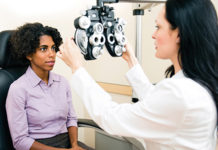
From politics and film to business and science, women are routinely underrepresented. There’s another sphere in which female representation is lacking, and it’s one that threatens women’s well-being and very survival: health care. Women are falling through what’s known as the “health gap.”
Gender differences overlooked
Whether it’s research, policy, diagnosis, or treatment, gender differences have not been adequately studied to date—if they’ve been taken into account at all. Women’s physiology, biology, cultural norms, and life circumstances are often overlooked, and the consequences are both real and dangerous.
“From a research perspective and care perspective, differences between sex and gender really haven’t been well considered,” says Toronto geriatrician Paula Rochon, vice-president of research at Women’s College Hospital. “As a result, women don’t necessarily have information about them that’s very particular to their needs, so this creates a gap.
“Often, women haven’t been adequately included in clinical trials in a way that represents how a particular condition might impact them,” adds Rochon, noting that Women’s College Hospital is prioritizing gender in its research and study proposals.
“The other piece to this, and I think the most glaring, is that even when women are included in trials, investigators don’t necessarily report the information in such a way that you can distinguish how women did and how men did, therefore you lose information. One-size-fits-all isn’t what you want.”
Deadly consequences for women’s heart health
Heart disease and stroke may make for the most alarming examples of how the gender health gap translates to potentially deadly real-world experiences. Combined, the two conditions are the leading cause of premature death of women in Canada, according to the Heart and Stroke Foundation of Canada.
Hormonal changes, pregnancy, and menopause are among the risks specific to women’s hearts. However, two-thirds of related clinical research is done on men. Compared to men, women are underdiagnosed and undertreated.
In fact, 53 percent of women with symptoms of heart attack have those signs go unrecognized. Some have died as a result. Heart and Stroke is responding by doubling the dollars it invests in health care for women.
Drug dangers for women
Certain pharmaceutical therapies are another stark illustration of how the health gap hurts women. Consider Ambien, which is used for sleep. In 2013, the US Food and Drug Administration cut the recommended dosage for women in half after discovering that American women were routinely overdosing on the active ingredient, zolpidem.
“If you’re looking at drugs and you’re not necessarily thinking about the differences between women and men, you don’t understand that women may need drugs in slightly different ways,” Rochon says.
“Women may require a lower dose, or the way they absorb or metabolize the medication may be different. It may end up that women are getting doses higher than they actually need, and that can result in side effects.”
Inappropriate long-term treatment
Gender can also affect how health professionals provide care. Women are more likely than men to report severe and long-lasting pain, for instance. But doctors tend to approach women’s pain as psychological or psychosocial and are more likely to refer women to a therapist rather than a pain clinic. Women who report chronic pain are also more likely to be prescribed antidepressants over pain medication.
It goes on. From tuberculosis to attention deficit hyperactivity disorder, women are less likely than men to be properly diagnosed.
A history of omission
In Canada, the inclusion of women in clinical studies is a relatively recent phenomenon.
One of the first initiatives to include women in research stemmed from dismay over the lack of scientific investigation into breast and reproductive cancers. In 1997, Health Canada released the Guidance Document on the Inclusion of Women in Clinical Trials. The policy was replaced in 2013 with Considerations for Inclusion of Women in Clinical Trials and Analysis of Sex Differences.
However, these efforts are merely recommendations. To date, it is still not mandatory to include women in research, and there’s no indication whether monitoring will ever be enforced. Until women are equally involved, the health gap remains, and women’s health will continue to suffer.
Stop dismissing women: Close the data gap
The health gap—and the urgent need to close it—is a topic that Caroline Criado Perez covers in her award-winning book, Invisible Women: Data Bias in a World Designed for Men (Abrams Press, 2019). The London, England-based writer and feminist campaigner describes how women are being let down by the medical establishment.
“The bodies, symptoms, and diseases that affect half the world’s population are being dismissed, disbelieved, and ignored,” Criado Perez writes.
“And it’s all a result of the data gap combined with the still prevalent belief, in the face of all the evidence that we do have, that men are the default humans. They are not. They are, to state the obvious, just men. And data collected on them does not, cannot, and should not, apply to women.
“We need a revolution in the research and the practice of medicine, and we need it yesterday,” she continues. “We need to train doctors to listen to women, and to recognize that their inability to diagnose a woman may not be because she is lying or being hysterical: the problem may be the gender data gaps in their knowledge.
“It’s time to stop dismissing women, and start saving them.”
Ways to help
- On an individual basis, people can narrow the health gap by supporting organizations that are working to accomplish the same, whether it’s through volunteering or donating money.
- Raise awareness of the health gap through your social channels.
- Contact research organizations and demand gender considerations be a requirement for successful proposals.
Narrow the gap
For more on why we need to narrow the women’s health gap, visit alive.com/webexclusive
Gail Johnson is a Vancouver-based writer, broadcaster, and fitness instructor.
This article was originally published in the May 2020 issue of alive Canada, under the title \”Health Gap Harms Women.\”






























